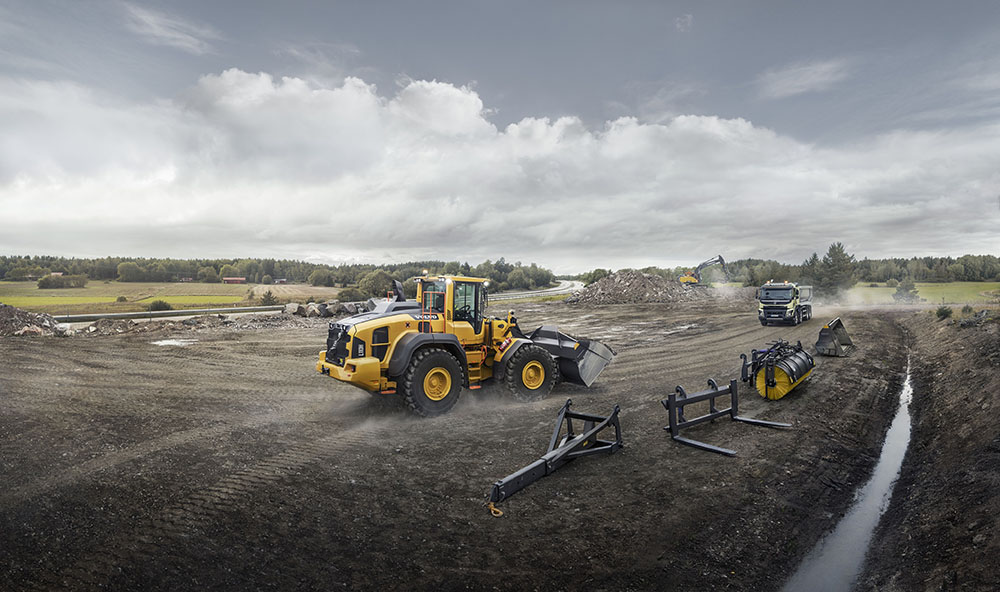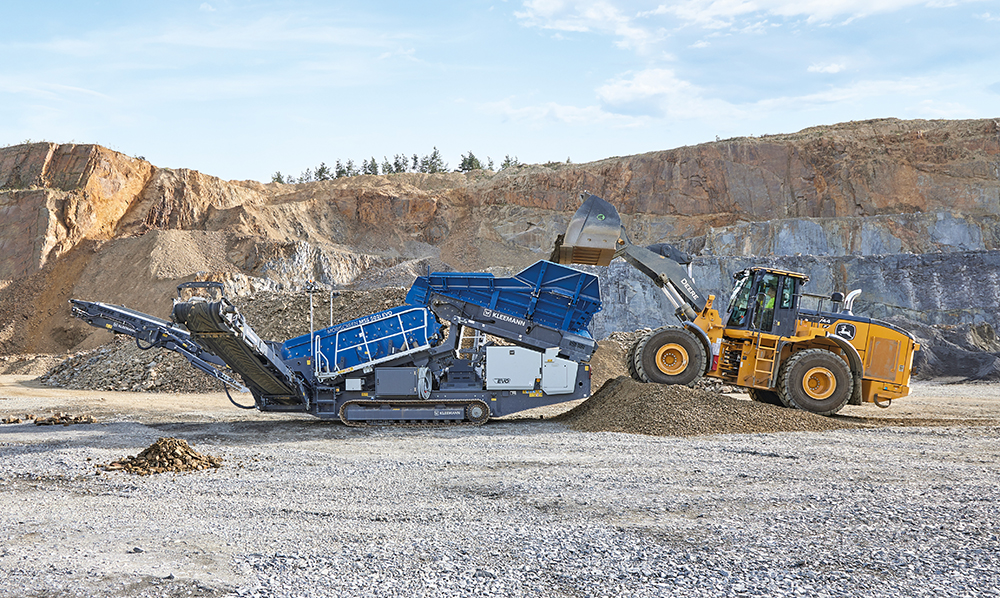
Major UK construction materials supplier Aggregate Industries recently published the roadmap for its ambitious journey to net zero. Our Journey to Net Zero follows the launch of the business's wider sustainability strategy, Building Progress for a Sustainable Future, which sets out Aggregate Industries' vision to become the UK leader in innovative and sustainable building solutions and its ambition to embed sustainability in the future of construction. Guy Woodford spoke to Kirstin McCarthy, sustainability director at Aggregate Industries, to learn more
A clear plan with critical milestones to benchmark progress, Our Journey to Net Zero identifies five workstreams that will accelerate Aggregate Industries’ (AI) journey towards net zero by providing deliverable actions and commitments for each of the business’s divisions to achieve by 2025. The roadmap then captures a series of long-term commitments beyond 2025 that form a long-term change process.

Key features of the AI roadmap, based on 2020 baseline data, include reducing unblended gas oil usage by over 90% by 2035, increasing the use of low-carbon fuels and hydrogen to over 50% of the fuel mix by 2035, using over 2,000 low-carbon trucks, such as electric or hydrogen, within the fleet network by 2040, producing over 20GWh of clean energy per year from onsite renewable power generation by 2035, and beginning to capture and permanently store CO2 from AI’s Cauldon Cement Plant in Staffordshire from 2030.
As she outlines in a Teams call the headline targets of Our Journey to Net Zero, AI’s Kirstin McCarthy says: "For the last 12 months, we’ve spent much time mapping out and understanding all our divisions’ carbon footprints. The biggest part of our footprint is cement. Historically and understandably, our biggest focus has been on lowering its footprint. What we lacked in our strategy was how all the other divisions’ carbon footprints could be lowered to get our overall business to zero [emissions]. That includes our aggregates, ready-mixed concrete, cement, concrete products and Surfacing Solutions divisions. The resulting Our Journey to Net Zero roadmap offers way more detail on how we can meet our net zero targets and is an evolution of our Building Progress for a Sustainable Future strategy published a year ago.”

Scopes 1, 2 and 3 categorise the different kinds of carbon emissions a company creates in its operations and wider value chain.
The term first appeared in the Green House Gas Protocol (GHG) of 2001, and today, Scopes are the basis for mandatory GHG reporting in the UK.
Scope 1 emissions cover the Green House Gas (GHG) emissions that a company makes directly — for example, using fuels in the production process while running its boilers and onsite vehicles involved in the production process.
Scope 2 emissions are the emissions it makes indirectly – like when the electricity or energy it buys for heating and cooling buildings is being produced on its behalf.
Scope 3 emissions are all the emissions associated, not with the company itself, but that the organisation is indirectly responsible for, up and down its value chain. For example, from buying products from its suppliers and its products when customers use them.
“Regarding our carbon footprint, Scopes 1 and 2 are the biggest part of our carbon footprint. For other organisations, Scope 3 is the biggest part of their footprint, as they don’t manufacture the building materials as we do”, explains Kirstin.
She adds: “Within Scope 1 are the fuels used to manufacture the [building materials] and emissions from a chemical reaction that happens with the limestone during the cement production process.”
Kirstin says AI’s Scope 1 and 2 carbon emissions in 2020 were just over 1 million tonnes. In 2022, that was down to 778,000 tonnes. “Production was down in 2020 due to the coronavirus, and we sold a cement plant in 2021, but the drop in carbon emissions in those two years has still been achieved despite production going up,” she notes.

Key targets within AI’s Our Journey to Net Zero strategy include reducing the company’s carbon emissions by more than a third (37%) by 2025 and by two-thirds by 2030. By 2050, AI aims to have zero carbon emissions across its operations.
Kirstin explains that 2020 is the baseline for tracking progress against the Building Progress for a Sustainable Future strategy and the Our Journey to Net Zero roadmap as it was the first year AI received its annual Scope 3 carbon emissions data. “For the strategy and roadmap, we developed a business model that looked at each of our business divisions’ production forecasts and the fuel usage linked to that. That allowed us to see what the carbon footprint would look like up to 2050 if we did nothing to change our approach. Each business division managing director created a sub-group to allow a lot of collaboration and business scenario role-playing in developing a distinct plan for that division to get to net zero. This includes looking at what opportunities we had to achieve this and what supporting levers we need to implement.
“We also have ex-co-director-sponsored working groups focusing on renewable energy, alternative materials, low-carbon fuels, carbon capture and utilisation (CCUS), and energy-efficiency-led plant management. They meet monthly, trial different things, and move our strategy forward.”
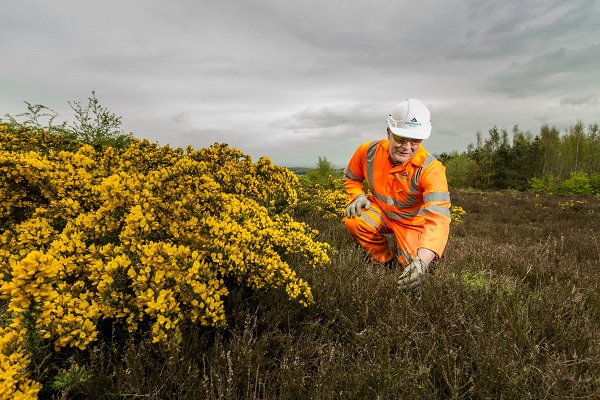
Kirstin highlights that AI has invested £13mn in an alternative waste facility in its UK cement plant. It allows the business to use alternative fuels, reducing production reliance on coal. “We are looking at doubling our use of alternative fuels at the plant,” she explains.
“Our asphalt and contracting business is now a combined Surfacing Solutions division. It focuses on thermal energy, as about 52% of asphalt carbon emissions come from the [production] heat. The division has increased its use of biodiesel and HVO [hydrotreated vegetable oil] to about a third of its fuel consumption.
“We have ambitious plans by 2025 to transition two of our asphalt plants to hydrogen power. We’ve signed several NDAs [Non-Disclosure Agreements] and MoUs [Memorandums of Understanding] with some major companies on that.”
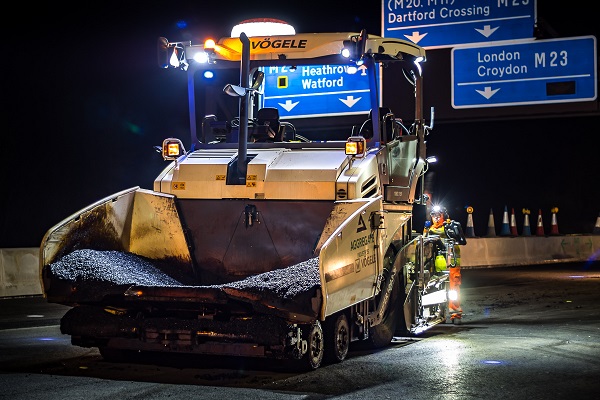
Kirstin comments on AI customers’ reactions to the company’s comprehensive sustainability and net zero work: “Generally, they welcome the progress we are making as they are also under pressure to produce carbon-reduction plans in their bids for government contracts. We are very much working with our customers, so we are both seen by the government and other authorities as leading experts on carbon reduction.”
Kirstin notes that AI’s parent company, Holcim, set the industry’s first 2050 net zero targets validated by the Science Based Targets initiative (SBTi). A partnership between CDP, the United Nations Global Compact, World Resources Institute (WRI) and the World Wide Fund for Nature (WWF), the SBTi drives ambitious climate action in the private sector by enabling organisations to set science-based emissions reduction targets.
I am curious how much Holcim has influenced AI’s Our Journey to Net Zero roadmap and wider Building Progress for a Sustainable Future strategy.
“Holcim sets out the direction [on carbon emissions] and its ambition and approach to decarbonise its entire operations. However, in the UK, the product mix is unique. Although Holcim is growing the sustainable solutions and products part of its business, it’s still involved in cement manufacturing. Its STBi focus is on cement. Although cement is the biggest carbon footprint within Aggregate Industries, we have one cement plant and over 200 other plants and sites across the UK that we need to decarbonise; therefore, our strategy is focussed on all products.”
Kirstin says that AI is working with Holcim’s Innovation Centre in Lyon, France, on trials around recycling construction and demolition materials for use in AI-readymix cement and concrete products. “The trials are in their early phases but are showing promise,” she discloses.
Is AI benchmarking its net zero roadmap and sustainability strategy against UK competitors? “We have done some benchmarking, but only limited information is available,” says Kirstin. “Also, much of what competitors are doing on emissions centres only on cement and concrete.

“As we get closer to 2050, you are gazing into something of a crystal ball, but we think we‘ve focused on achievable targets in certain timeframes. We’ve also worked very closely outside each business division with our alternative materials, procurement and transport teams, the latter looking, for example, at the projected use of biofuels across Aggregate Industries’ operations.
“Along the way, we have checked in with Holcim to ensure that what we do aligns with its wider sustainability strategy. Each Aggregate Industries business division MD formally signed off on their sustainability strategy and the net zero roadmap at the end of last year. Individual business divisions’ carbon emissions are now reported at board meetings, integrated alongside financial and sales reporting data.”
I ask Kirstin whether AI and other leading construction materials manufacturers are facing a Catch-22 of striving for product sales growth while trying to drive down products’ carbon emissions. “We have our absolute carbon emissions but are also a growing business, and we ultimately need to decouple the carbon [emissions] intensity from our production process. We have lower carbon intensity targets and measure against them by dividing carbon intensity against production volumes.
“We see carbon capture and utilisation [CCUS] fully kicking in across our business from 2030 and fully capturing our emissions beyond 2035. However, it is important to point out that carbon capture is not the be-all and end-all for us. We need to eliminate the carbon emissions in the first place. We would look to capture, store and utilise carbon emissions we cannot eliminate due to the chemical reaction of limestone in cement production.”
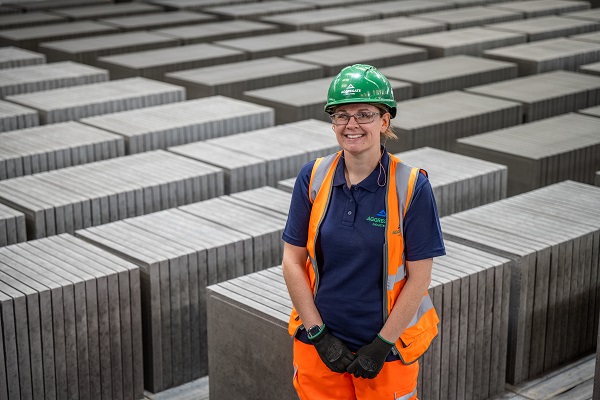
Kirstin says AI can benefit from parent company Holcim’s existing CCUS projects via its Accelerator programme working with longstanding and start-up businesses. This includes Westküste100, a 10-company consortium based in Germany developing end-to-end sustainable business practices to reduce waste across all sectors. Holcim’s Carbon2Business is part of the project, and it involves capturing CO2 from cement manufacturing at the Holcim Lägerdorf plant in Germany. It will then be transformed into synthetic fuel for the mobility sector and feedstock for the chemicals industry. The project was selected for an EU Innovation Fund grant in 2022. The project is expected to capture around 1.2 million tonnes of CO2 annually, and the plant will be net zero between 2028 and 2029.
Holcim has also received an EU Innovation Fund grant for its Go4ECOPlanet project in Poland. It aims to create an end-to-end CCS chain starting with CO2 capture from the site in Kujawy to offshore storage in the North Sea. The project’s vision is for the Kujawy plant to be net zero by 2027.
In the past year, AI has introduced several low-carbon products across its divisions, including ECOPlanet, the world's broadest range of low-carbon cement and the award-winning low-carbon green concrete, ECOPact Prime AS.
As Kirstin highlights, the business recently launched the industry's first fully customisable carbon reporting tool, Your Carbon Report, offering customers accurate carbon data by AI product or project.
“Customers have been requesting this for years, and before Your Carbon Report, we had provided only limited information. This now means a National Highways scheme or a certain road works project, for example, can give the carbon footprint of our products used on that highway or road contract or for the past year of that customer’s orders. This allows us to work with our customers to help them source lower-carbon products when placing future orders.”

Aggregate Industries’ Your Carbon Report is available across its readymix concrete, concrete products, asphalt, aggregates and bagged cement.
Kirstin continues: “We also have an app that allows our ready-mix concrete site operators to log in and see their site’s daily carbon emissions. You can search for previous days or months to see whether you are improving. It’s really important to give the ownership of driving these improvements to our site-level workers.”
As we talk, it’s clear that AI has come a long way from what Kirstin describes as the company’s early decarbonisation years, mainly focused on increasing energy efficiency. “Ultimately, we need to transfer from high to low-carbon fuels, so we are focusing on renewable energy and switching to biofuels that don’t require a significant technological change.
“There is a bit of fear around decarbonisation around the best time to invest in this or that innovative technology. I have a colleague that says, ‘We must be cautious. We don’t want to end up with a Betamax [video player]! Availability of alternative fuels is also really important.”
Kirstin hints at a major CCUS project involving AI and some of its competitors set to launch in the days following our Teams call.

Sure enough, 17th May 2023 saw the unveiling of a world-first project to create a net zero future for the cement and lime industry. Located in England's Peak District, the project will prevent over 3 million tonnes of carbon dioxide emissions annually by 2030.
The Peak Cluster initiative includes five cement and lime plants in the Peak District and Staffordshire Moorlands, owned by AI, Tarmac, Breedon, and Lhoist, and the Lostock Sustainable Energy Plant in Cheshire.
Carbon dioxide emitted from the cement and concrete industry accounts for around a quarter of the total emissions in Derbyshire and Staffordshire. With 40% of all UK cement and lime manufacturing in the Peak District and local area, the project has the potential to dramatically reduce the sector's emissions to ensure the sustainable, net zero future of this essential industry.
“We are in a very competitive industry, but when it comes to sustainability and carbon, we have to work together to survive,” emphasises Kirstin.
For more information on AI’s Our Journey to Net Zero, visit aggregate.com.








